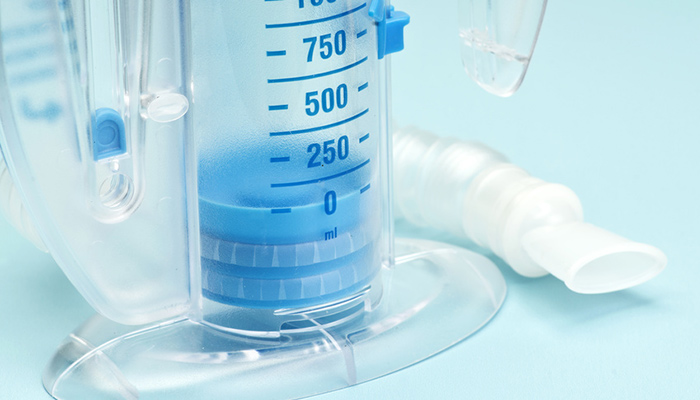Because We Care
Practical tips for family caregivers
March/April 2017
Tax time is upon us. This year we feature an article to help your loved one get the medical deductions Uncle Sam allows. We also provide you with tips for managing anger right in the moment when it’s descended upon you. (We hope you aren’t seeing red because of taxes!) And last, although flu season is coming to a close, that doesn’t mean that pneumonia is no longer a threat. Many older adults get pneumonia while they are in the hospital, spring, summer, fall—any time of year. Learn what you can do to reduce your loved one’s risk.
Medical deductions
 Uncle Sam allows special deductions when medical expenses add up.
Uncle Sam allows special deductions when medical expenses add up.
When to itemize. If the person you care for was 65 years or older last year (2016), he or she can deduct certain medical costs. The costs must total more than 7.5% of adjusted gross income (AGI). For instance, if AGI is $40,000, medical expenses over $3,000 can be deducted. For a person younger than 65, the cost must be more than 10% of AGI. (In our example, that would mean $4,000 or more.)
Insurance premiums. Health insurance premiums are deductible. This includes money deducted from Social Security to pay for Medicare. It also includes payments made for any supplemental insurance (“Medi-gap”) and Part D (drug coverage).
Medical expenses not covered by insurance. Many things that Medicare doesn’t cover ARE deductible on taxes. These include glasses, hearing aids, and dentures. Also, doctor exams to check vision and hearing. Plus, fees for dental visits and cleanings.
Additional fees or copays. Any deductibles or co-payments for doctor visits, hospitalizations, drugs, etc. can be listed. Also lab tests, durable medical equipment, ambulance service, etc.
Complementary medicine. Medicare will not cover these services. But the IRS recognizes visits to licensed acupuncturists and chiropractors as medical expense.
Medical travel. Have your loved one keep a mileage log. Driving to appointments can be deducted at 19 cents per mile (plus parking and toll fees). Keep track of the costs of bus, taxi, or train rides. Flights and hotel expenses can be counted if your relative must travel long distance for medical care.
Home modifications. Did your relative install a ramp for easier entrance to the home? Widen doorways for wheelchair use? If the change does not increase the value of the property, then it is considered a medical expense.
Check with a professional tax preparer to verify which expenses can be deducted.
Return to top"Sometimes I feel furious!"
 Anger as an emotion is neither good nor bad. It is a messenger. It can provide energy and motivate you to action. But anger by itself has never solved a problem.
Anger as an emotion is neither good nor bad. It is a messenger. It can provide energy and motivate you to action. But anger by itself has never solved a problem.
The trouble with anger rests on how you respond to its message. Ideally, you want to harness that energy for finding constructive solutions to the situation. But in the midst of seeing red, that can be hard to do.
Use these strategies to short-circuit your anger before it gets out of hand.
- Know your physical signs of anger. A faster heart rate. Sudden heat. Tense muscles/jaw. A knot in the stomach. Once you learn the signs, you’ll be better prepared to interrupt an escalation when you start feeling irritated, frustrated, or annoyed.
- Take a time out. Remove yourself from the situation. Go for a walk around the block if you can. Or at least to the bathroom or the back porch. Counteract the fight-or-flight response with slow, deep breathing.
- Get some exercise. Burn off the adrenaline of anger through movement. Again, a brisk walk is great! Or put on some dance music and move!
- Focus on your senses. Concentrate on the sensations in your body. This reduces the intensity of your emotions. What are you seeing? Smelling? How does your body feel?
- Count to ten. If you can’t physically create distance, at least give your logical mind some time to catch up with your emotions. Count to ten before you say or do something you will regret later.
Seek solutions when you are calm. You don’t have to bury your anger. But let it chill for a bit. The conversation and solutions you explore later will be much more fruitful if you do.
If you feel your anger is out of control, seek professional help. Don’t let the destructive side of anger make things worse.
Return to topGetting pneumonia while hospitalized
 If the person you care for has been hospitalized, you may have noticed an odd-looking device on their bedside table. This is a “spirometer.” Patients blow into it several times an hour to prevent a particularly serious infection: hospital-acquired pneumonia.
If the person you care for has been hospitalized, you may have noticed an odd-looking device on their bedside table. This is a “spirometer.” Patients blow into it several times an hour to prevent a particularly serious infection: hospital-acquired pneumonia.
Hospital patients spend a lot of time in bed. Without activity, fluids build up in the lungs and become a prime site for infection. Add a weakened immune system and exposure to lots of people (staff, other patients, and visitors), and the risk of infection goes up.
Then, too, the germs in the hospital are very powerful. Many are even resistant to antibiotics.
If your loved one goes into the hospital, there are things you can do to help prevent this dangerous complication:
- Ask everyone who enters the room to wash their hands. This means friends and family, as well as staff. Hand sanitizer will also do the trick.
- Stay home if you are sick. Ask the same of well-meaning visitors.
- Get your relative up and walking asap. Walking is the best way to clear the lungs and engage the body’s natural healing mechanisms.
- Encourage deep breathing. Ask a hospital staff member to show you and your loved one the proper use of the spirometer. Encourage your relative to use it and track progress.
- Keep the headboard raised. A 30° angle on the bed is enough to help keep the lungs clear.
- Ensure good oral hygiene. Brushing teeth and rinsing the mouth at least twice a day gets rid of bacteria that may be on their way to the lungs. Also let the staff know of any mouth sores or cuts, as these need special attention.
- Ask whether a pneumonia vaccine is appropriate. Depending on your loved one’s condition, immunization history, and likely length of stay, this may be a wise precaution.

